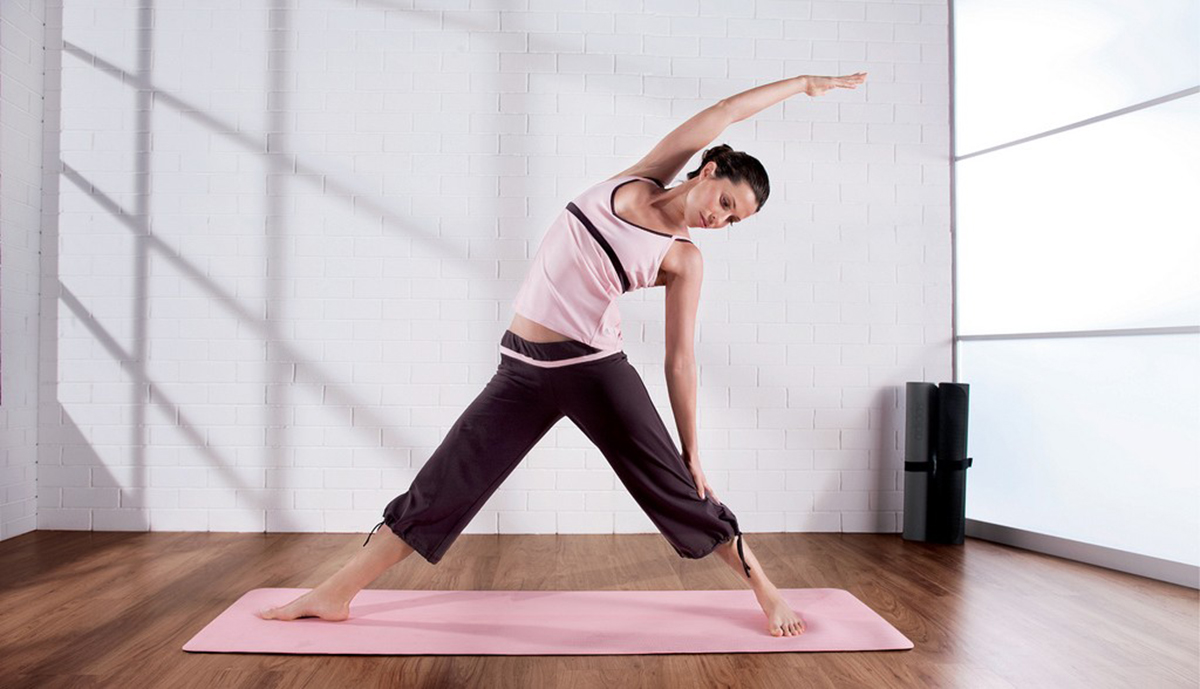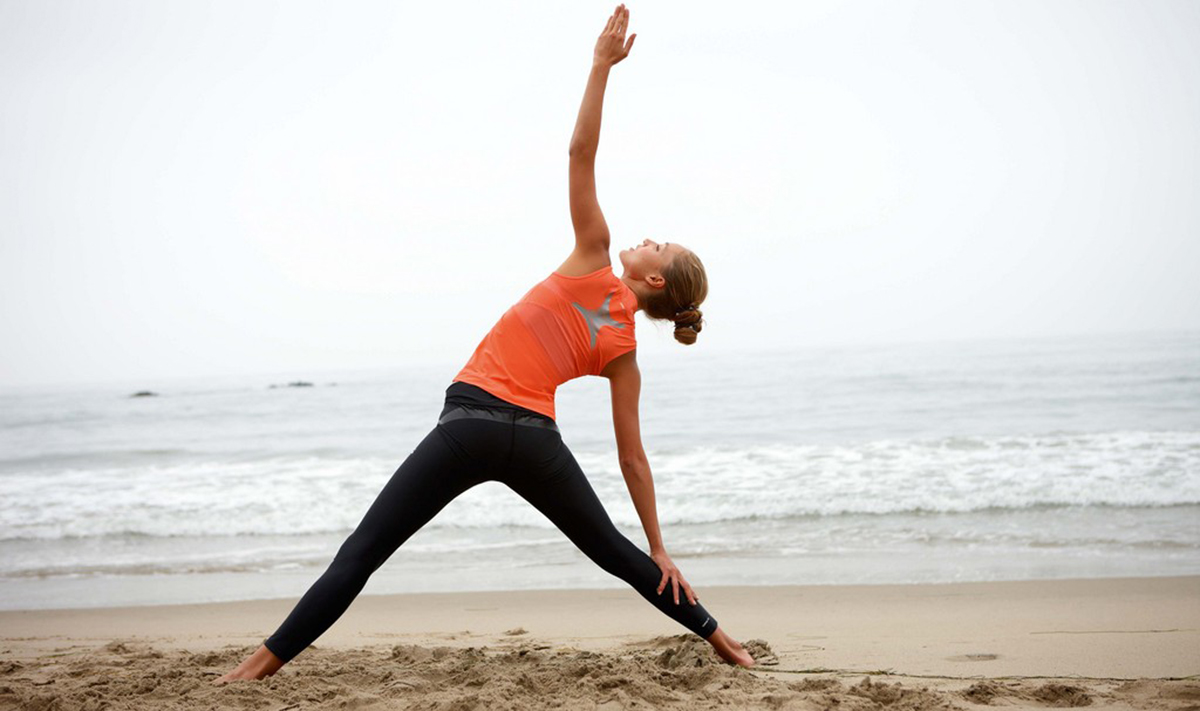Yoga comes from the Sanskrit word yug, meaning ‘union’ or ‘unification.’ This word has an important place in Hindu theology and it’s from Hinduism that yoga came.

In the 70s, with the explosion of interest in oriental thought that also gave us the Karate Kid, yoga took off in a big way - and has seemingly only got more popular. It’s reached the level of cultural saturation where even if you couldn’t identify a yoga pose on sight, you’d recognise a yoga class.
Once the stereotype would have been something like bearded men and women called Moonbeam burning incense and sitting in the lotus position in sack tops.
Now, it’s a roomful of Lulumelon-clad ladies stretching and sweating.
Yoga suffers from being stereotyped. In pop culture, it's for women, or it's a waste of time that could be spent doing something much more intense, or it's touchy-feely, get-in-touch-with-yourself stuff, and it retains some vague hippyish associations too.
The truth is that yoga is such a broad church that everything above is true, and it's also false. Some yoga is very meditative. Some is very touchy-freely. Some is very athletically challenging, some is not conventionally athletic at all. The likelihood is that there is some yoga out there that would fit you and your goals, simply because of the enormous variety available.
Some of the varieties of yoga
Hatha Yoga
Hatha yoga is traditionally one of the 'eight limbs' of yoga: traditionally these are ethics (yama), self-discipline (niyama), physical culture (asana), breath control (pranayama), withdrawal from the world (pratyahara), learning to concentrate the mind (dharana), meditation and contemplation (dhyana), and spiritual ecstasy or enlightenment (samadhi).
In other words, most of what we know as yoga comes from hatha yoga. When you see a sign advertising hatha yoga now, though, it's more likely to be one of a number of traditions that focus on asanas, or postures. It's likely to use some basic postures, to focus on the postures themselves and to be more gentle than some of the modern power yoga type classes. That doesn't mean it won't be athletically challenging. Holding precise postures for a long period of time is difficult and it can have beneficial effects both for sedentary people and for athletes in intense sports who spend most of their training time doing the exact opposite. Hatha yoga is a good place to begin learning to focus on movement quality.
Kundalini yoga
In Hindu theology, kundalini refers to 'serpent' energy, or spinal energy. Kundalini yoga is yoga that concentrates on this and will incorporate esoteric breathing exercises, chanting and meditative practices as well as physical postures.
Bikram Yoga
Bikram yoga is the brainchild of Bikram Choudhury, who invented it in the 1970s. It's practiced in heated rooms and follows a set pattern of 26 postures which are intended to increase mobility and to 'rinse' or 'cleanse' the internal organs. Because it allows people with stiff tendons and joints to rapidly increase their mobility, Bikram yoga is popular amongst athletes.
Pilates yoga, yogalates, etc
Many classes combine yoga movements with other exercise types. Pilates lends itself to these combinations quite well because of its emphasis on control, lengthening of the spine and other physical attributes that will be familiar to any yoga practitioner, but classes are available that draw material from ballet, T'ai Chi, or other flop-based gymnastic training too. Are they in keeping with yogic tradition? Yes and no - the history of yoga is a history of people adapting it to suit their needs, and if Hindu holy men don't feel that what you do is 'proper yoga,' how much do you care?
Power yoga
Yoga poses run the gamut from fairly gentle and easy to postures that require both a lot of strength and a lot of mobility. Google 'firefly' or 'flying crow' to see what I mean; they're not for beginners! Less advanced yoga moves can be adapted to give a workout that focuses on building more strength and is more athletically challenging, and power yoga is regarded as a good way to gain some strength and get a cardiovascular workout at the same time.
See Also: Styles Of Yoga: Whats Out There And How To Choose
Vinyasa flow
That might sound less difficult, but as a result, Vinyasa classes are less like a series of static holds and more like an hour of slow-motion calisthenics. They can be repetitive but they have a good reputation for providing a solid workout.
Of necessity in dealing with a subject that's both very broad and very deep, I've left a lot of material out. Hopefully, you have a clearer idea of what you'll find when you walk into a yoga class.
How Can You Prepare For Your First Yoga Class?
One way would be to learn a few basic asanas and practice them, and we'll get to them shortly. Another would be to know what the expected etiquette is - there's nothing worse than being the person in church who stands up as everyone else sits!

Do:
- Show up to class a few minutes -say, 10-15 - early. It gives you time to relax into what you're doing, instead of rushing through the door. Some teachers won't let you in if you're late because it disrupts the class for everyone else.
- Bring a towel. you're going to need it.
- Focus and calm your mind. Setting an intention - a goal to work towards that you hold in your mind while you practice - can be helpful here.
Don't:
- Show up having just eaten. It's unpleasant!
- Bring switched-on cellphones or tablets or other connective devices to your class. Leave them outside or turn them off.
- Push it - you're supposed to be nurturing yourself, not punishing yourself. You should let your yoga develop, not try to force it.
- Make it too social. Acknowledgements and greetings are fine, but long or loud conversations aren't really what anyone's there to do.
Here are some of the more basic postures that you'll likely find in any yoga class, and tips on how to practice them at home
Downward dog
This is often the first yoga asana you'll learn. Most yoga classes will incorporate it.
Your feet should be about shoulder width apart, and your hands should be about the same. In downward dog you should form two straight lines: one from your heels to your hips, and one from your hips, through your shoulders, to your hands. You're in an 'A' shape on the floor. Point the top of your head at the floor and try to lengthen your neck and back, looking back at your feet. Try to move your shoulders towards your legs without bending your back. Many people will feel this as stretch in their calves in the first instance!
Warrior
There are three main variations - and a host of minor ones - on the warrior pose. I'm just going to talk about warrior 1. Start in downward dog and step forward with your left foot, putting it outside your hands. That should be a long step. Stand upright and you should find your left leg is at about 90 degrees, with the thigh parallel to the floor. Your back leg should be straight and the toes should turn in slightly, while the front toes should face straight forward. Make sure your front knee is rotated out - don't let it buckle inwards. Raise your hands overhead, palms together, following them with your eyes so that your chest rises and your head moves back. Return to downward dog and repeat on the other side.
Mountain
Mountain pose is often found at the beginning or end of a set of poses. You stand with your feet hip-width apart and with your arms at your sides. As you breathe in, raise your arms overhead until the plasm meet, with your chest raised and your gaze following your hands. Lower your hands and repeat.
Bridge
You can practice basic glue bridges - they're a good preparation for any form of physical exercise; but yoga has its own traditional bridge pose, which is done like this:
Lie on your back with your feet close to your buttocks and press up off the floor. Put your hands clasped together under your back and press down into the floor with them as you raise your hips. This adds to the drive lifting your hips off the floor.
See Also: Yoga-General Info
Corpse
Corpse pose is the posture most yoga classes will end with. You lie on your back, with your hands by your sides and your entire body relaxed. Often yoga classes will end with 5 minutes or so of corpse pose, sometimes more. It's an opportunity to recover, but also to reflect on the class and to concentrate on your breathing and relax.
If you like what you've read here, or you think I've missed out something vital, contact me in the comments section below!
- Photo courtesy of adifansnet by Flickr : www.flickr.com/photos/adifans/3538811254
- Photo courtesy of adifansnet by Flickr : www.flickr.com/photos/adifans/3454740831


Your thoughts on this